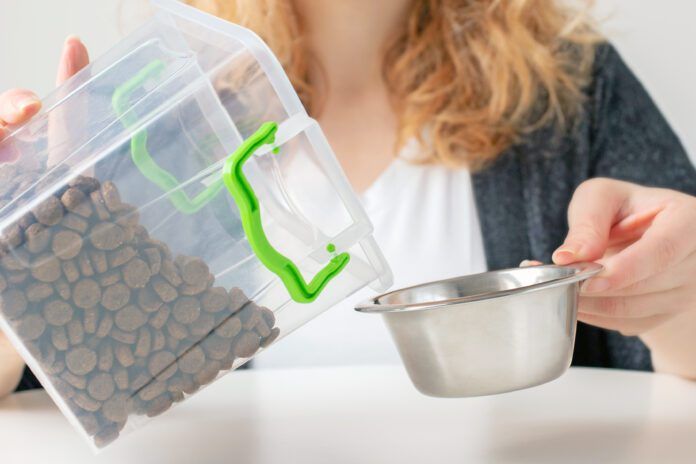Buying a large bag of dog food can cost you a few pennies less per pound, but it’s not worth the savings if you can’t use the bag up within four to six weeks. While dog foods don’t technically “expire,” foods past their “best by” or “use by” label dates are not as nutritious and are more likely to become moldy or otherwise compromised (even toxic). Don’t use dog food past its “best by” or “use by” date. It’s like eating expired breakfast cereal (yuck!).
Consider “Best By” an Expiration Date
The “use by” or “best by” dates are important enough to consider expiration dates. When a nutritionist formulates dog food, he or she calculates how long various ingredients, vitamins, and minerals remain potent and when they start to degrade. By the time you get to that “use by” date, you’re probably close to running on empty nutritionally. Be sure to consult our Approved Dog Foods list to find the best foods you can feed your dog.
And store it according to instructions. A study from the National Institutes of Health, the biggest mistake people make is not paying attention to temperature warnings. The report states, “Room temperature was the most overlooked parameter during storage, and this may be a cause of concern because exposure to warmth can enhance rancidity, especially in diet formulations rich in fats and oils.”
Dog treats expire too, and they also usually have a “best by” date. Some packaging even says things like, “Use within 30 days after opening.” Pay attention to that warning. Once you open the package and air hits the product, it begins to degrade. So, if an unopened bag of treats lists December 12, 2024, as its use by date and you open it on February 8, the “best by” date is no longer of interest. Use the same four to six weeks rule of thumb to decide when to toss any remaining treats.
It’s all about air and storage. If you’re using treats for training, always buy small packages because you want that reward for good behavior to be the very best. If you’re not using the treats for training, why are you buying them? You can make your own dog treats, too, including frozen ones and baked treats.
Dog Food Storage
The U.S. Food and Drug Administration (FDA) says proper storage of pet foods begins with an airtight container that’s clean and dry and has an airtight seal and in its original packing. It is important to have the lot number in case of a recall. (Opened wet food must be stored in the refrigerator; a few treats do, too, so always read the packaging.)
It’s easy to make mistakes when storing dog food. Always wash and dry the dog food container before putting another batch in, otherwise you risk the residue molding and contaminating the new food. Be sure it’s moisture-proof and airtight. Store the container out of the dog’s reach and, preferably, sight. Accidents happen when dogs get unsupervised access to storage containers.






